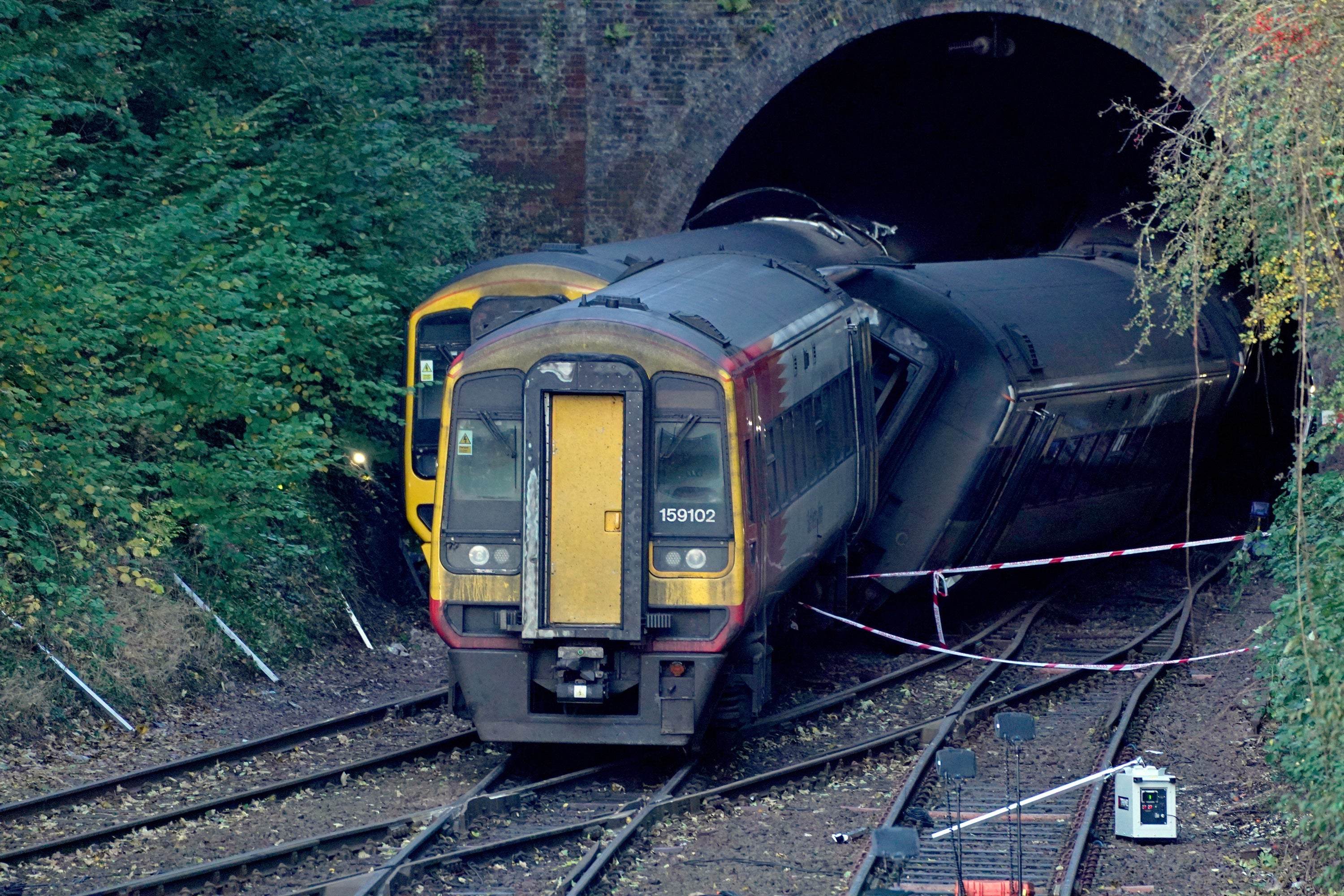Salisbury train crash: 14 injured after leaves not cleared from tracks
Analysis of the tracks after the collision found that ‘many areas had a medium or heavy level of contamination’ by crushed leaves

Your support helps us to tell the story
From reproductive rights to climate change to Big Tech, The Independent is on the ground when the story is developing. Whether it's investigating the financials of Elon Musk's pro-Trump PAC or producing our latest documentary, 'The A Word', which shines a light on the American women fighting for reproductive rights, we know how important it is to parse out the facts from the messaging.
At such a critical moment in US history, we need reporters on the ground. Your donation allows us to keep sending journalists to speak to both sides of the story.
The Independent is trusted by Americans across the entire political spectrum. And unlike many other quality news outlets, we choose not to lock Americans out of our reporting and analysis with paywalls. We believe quality journalism should be available to everyone, paid for by those who can afford it.
Your support makes all the difference.Crushed leaves suspected of causing a crash between two passenger trains were not cleared because of engineering work, an investigation has found.
Thirteen passengers and one driver required hospital treatment when the wheels of a South Western Railway (SWR) train slipped on the tracks outside a tunnel near Salisbury, Wiltshire, causing it to smash into the side of a Great Western Railway (GWR) service.
An interim report by the Rail Accident Investigation Branch (RAIB) revealed that a railhead treatment train (RHTT) was due to pass over the track less than two hours before the collision, but planned engineering work between Southampton and Brockenhurst meant its deployment was delayed.
The last time an RHTT treated the junction was around 32 hours before the crash, which happened at 6.43pm on Sunday October 31 last year.
Analysis of the tracks after the collision found that “many areas had a medium or heavy level of contamination” by crushed leaves.
RHTTs, operated by Network Rail, are fitted with high-pressure water pumps to remove crushed leaf film which causes train wheels to slip.
They can also apply a sand-based gel to help break up any remaining leaf film and assist with braking.
The last RHTT to pass through the crash site used water jets but did not apply gel, the RAIB said.
The inquiry found that the SWR train was travelling at 86mph – which was within the speed limit – as it approached a stop signal near Fisherton Tunnel.
When the driver applied the brakes, the train’s wheels “began to slide almost immediately”.
The train slid 191 metres past the signal until it hit the side of the GWR service at a junction.
The interim report found that the signalling system was “operating as designed”.
As well as the 14 people who were taken to hospital, the crash also caused major damage to the trains and the railway infrastructure.
Rail services through Salisbury did not fully resume for 16 days while repairs took place.
The full investigation will consider a number of factors, including Network Rail’s policies relating to the prevention of wheels slipping on rails, and the regulation of trains at high-risk locations.